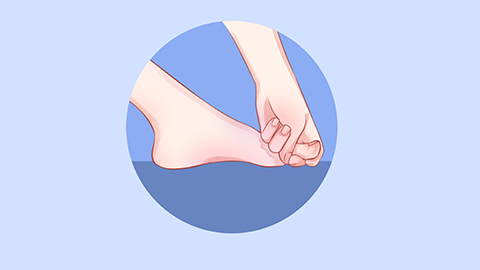What causes leg cramps when stretching during sleep?
Generally, leg cramps when stretching during sleep may be caused by sudden muscle strain, improper sleeping posture, hypocalcemia, lower extremity varicose veins, lumbar spinal stenosis, and other factors. It is recommended to seek timely medical attention to identify the underlying cause, followed by symptomatic treatment under a physician's guidance. Detailed analysis is as follows:

1. Sudden muscle strain: During stretching, the calf muscles may suddenly contract intensely, exceeding their tolerance range and causing spasms or cramps, which usually occur occasionally. When cramping occurs, immediately straighten the leg and slowly stretch the sole of the foot to relieve muscle tension. Routinely, gentle calf massage before bedtime can help relax the muscles and reduce the impact of sudden strain.
2. Improper sleeping posture: Prolonged compression of the calf muscles during sleep can keep them in a tense state, and when stretching, the change in muscle tension can easily trigger cramps. Adjusting sleeping posture, avoiding prolonged supine positions that compress the calf, and appropriately changing to a lateral position can help keep the muscles relaxed.
3. Hypocalcemia: Low concentration of calcium ions in the blood increases muscle excitability, making calf cramps more likely when stretching, often accompanied by numbness in hands and feet and fatigue. Patients may take calcium supplements such as calcium carbonate D3 chewable tablets, calcium gluconate oral solution, and calcium lactate granules as directed by a physician. Additionally, consuming calcium-rich foods like milk and soy products regularly and moderate sun exposure to promote calcium absorption are recommended.
4. Lower extremity varicose veins: Poor venous return causes blood to pool in the calf, and during stretching, muscle contractions further burden circulation, leading to muscle spasms and cramps, often accompanied by leg heaviness, swelling, and visible veins. Patients may use medications such as venorutin tablets, diosmin tablets, and calcium dobesilate dispersible tablets as directed by a physician to improve circulation. Wearing medical compression stockings can also assist venous return, and avoiding prolonged standing or sitting is advised.
5. Lumbar spinal stenosis: Narrowing of the spinal canal compresses nerve roots. When stretching, changes in lumbar posture increase pressure on the nerves, causing calf cramps along with back pain and lower limb numbness. Patients may use medications such as celecoxib capsules, mecobalamin tablets, and Yaotongning capsules as directed by a physician to alleviate symptoms. In severe cases, lumbar decompression surgery may be necessary to expand the spinal canal space, relieve nerve compression, and reduce cramp episodes.
Daily attention should be given to maintaining a regular routine, avoiding excessive fatigue before bedtime, and appropriately replenishing fluids and electrolytes. If calf cramps occur frequently, it is important to monitor for underlying conditions and seek timely intervention to prevent worsening symptoms.




